Improve your green reading with these easy steps
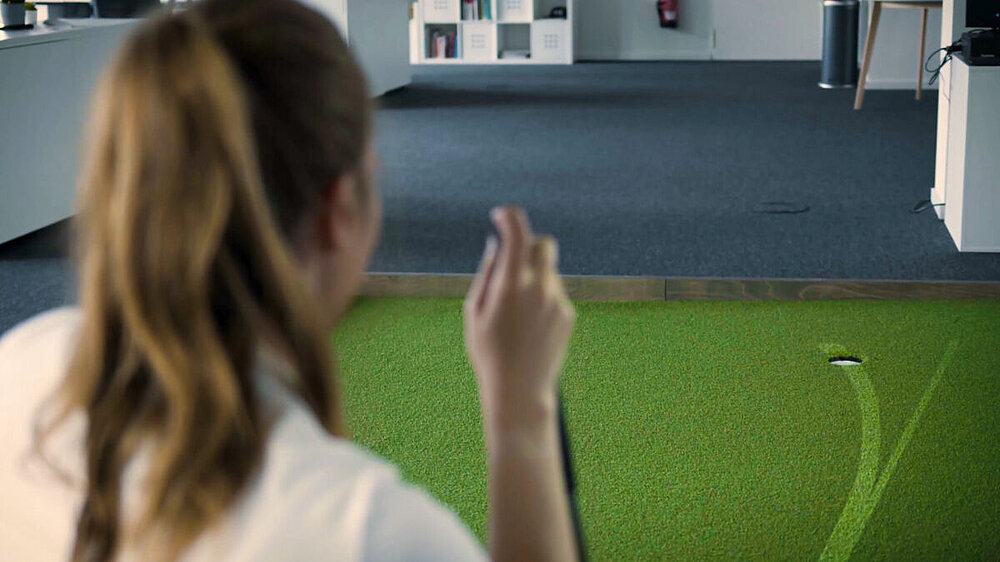
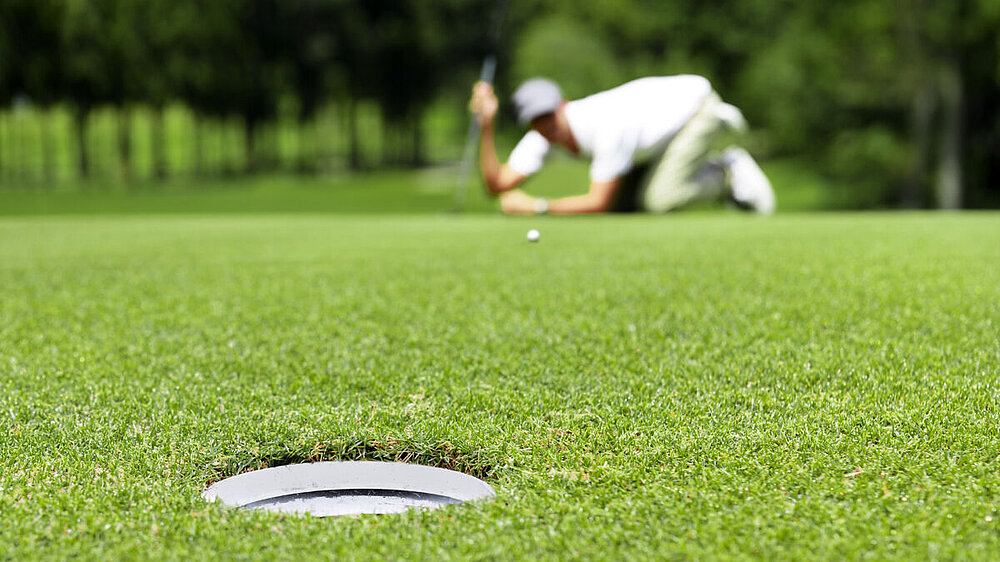
How much time do you spend practicing your green reading? The answer is probably not enough. This essential skill is commonly underrated, and people tend to overestimate their ability to read greens. Time for us to focus on the geometry of a putt, AimPoint, and how you can improve your green reading in 3 easy steps.
Walking past a putting green on any golf course, you will mostly see the following scenes: People are throwing their ball to the ground, looking at a pin, and proceeding to hit the ball. Rarely do you see someone actually looking at the line prior to hitting the putt. After making or missing the putt, they continue to a different pin position and repeat. Even in preparation for a competition, a lot of golfers follow the same protocol. However, once they are on the course, they all of a sudden proceed to serious green reading behavior. Including, but not limited to crouching behind the ball, pacing the distance to the hole, looking at the putt from both sides, and applying AimPoint. More than once I have encountered situations where I was wondering whether those people actually knew what they were looking for. Or if they simply saw it on TV and thought if pros do that, it must be good for my game as well.
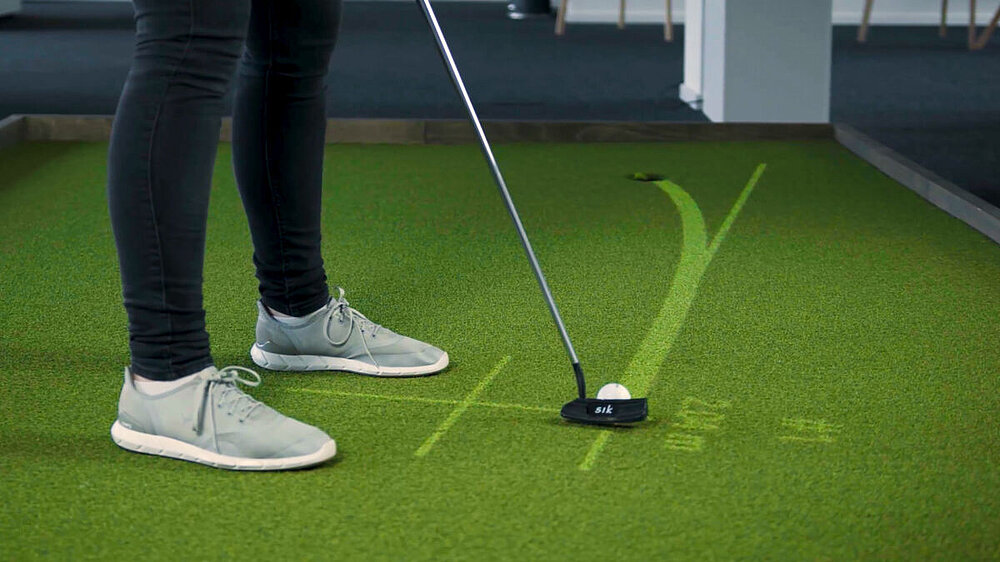
Understanding the geometry of a putt
The thing is, that we just do not spend enough time to think about what is actually happening on the green. Golfers have learned to accept that there are good putters out there and some people simply can’t putt. Quite simply, those who are not good at putting admit their defeat. They feel like there is nothing they can do about it. They can’t see the line, they struggle with speed and the ball just won’t drop. Obviously, this isn’t true, but it is also not that simple either. If you struggle with your drives or your irons, you will eventually think about getting a lesson and your pro will tell you, what to pay attention to. He or she can give you impulses that will help you hit your ball more straight, farther, or whatever else it is you are working on.
Going on the putting green is a different story. Even with the “perfect” putting stroke and even if you can hit your ball on your intended line all the time, you still have to pick the right line. And as we all know, visualization is something highly individual. Green reading might be the most difficult skill to teach, simply because someone else is telling you about something that you cannot see. You might even be able to agree on a spot to aim at, but it still doesn’t mean that you can visualize the putt now or that you can replicate it on your own. This is also the reason why PuttView has this initial Wow-factor for people. For most, it is the first time they actually see all aspects of a putt and are able to understand the interdependence. It is something that cannot be taught but rather has to be experienced. But let’s get back to the geometry of a putt because even without PuttView you can improve on your green reading skills.
When looking at a putt, there are three points that you should pay attention to. It is the hole entry point, the aiming line, and the ideal line. The hole entry point is the point, where the ball will drop into the cup. The aiming line is the line that you align yourself to and the ideal line is the actual path the ball travels on its way to the hole. Some people like to visualize how the ball drops, some see the curved line of the ball, and others prefer to see a straight line that they aim at. The important thing is to pick the right visualization for yourself and stick to practicing getting better in green reading with that approach. Therefore, let’s focus on that.
Ask yourself how you imagine a putt. You will quickly find out if you are more focused on aiming at a certain spot outside of the hole or if you focus more on the path the ball will travel on. If you are seeing the path of the ball or where the ball will drop into the hole, you are a curved line thinker. It also means that you are more of a “feel” putter. Curved line thinkers usually have a good sense of what the ball will do on its way to the hole, and they often have good touch especially when it comes to complicated or big breaking putts. However, they also often struggle with under-reading putts. The reason being, that as a curved line thinker you most likely align yourself to the apex, alas the highest point of the curve your ball is traveling on. To make your ball pass that point though, you would need to aim higher because, once the ball is set into motion, it immediately starts breaking. Aiming at the apex will therefore lead your ball on a lower line than what you actually intended.
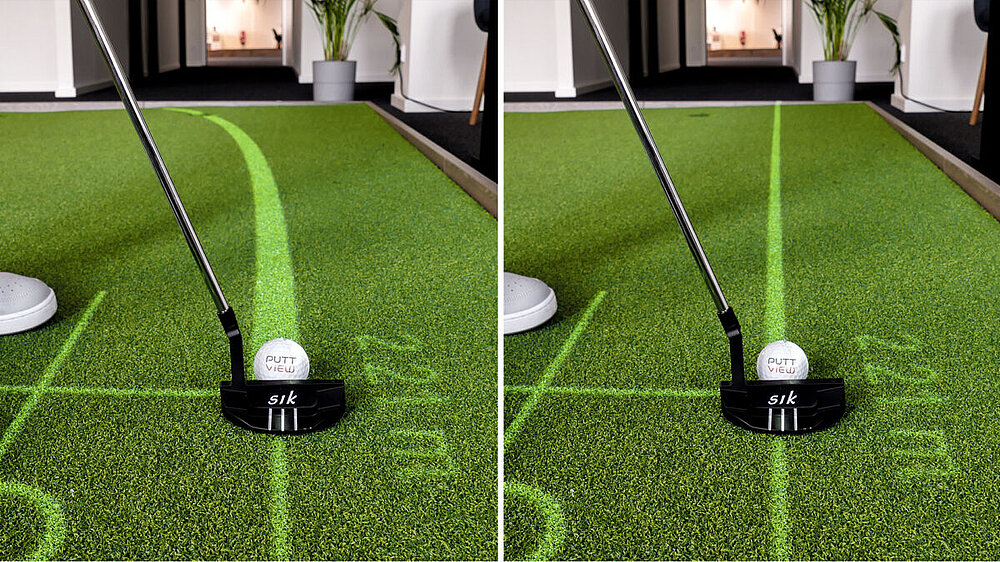
As a straight line thinker, you are more focused on how far outside of the hole you would need to aim at. This can be either a straight line from the ball to the aiming point or just a spot next to the hole that you are aligning yourself to. This approach of visualizing a putt is less intuitive than the curved line thinker approach, but if you manage to pick the right aiming line, it is also less prone to errors. Furthermore, it is the fundamental basis of AimPoint, the method where you see golfers stick out their arm and fingers to determine how far outside of the hole they will have to aim. As a straight line thinker, this might be a good way to improve your green reading skills, because it feeds into your intuitive way of visualization.

Now, that you have figured out which type of player you are, we can shift the focus to improving your green reading skills. By following these three simple steps, you can become a better green reader no matter if you are a straight line or a curved line thinker. Make sure, that you incorporate those tips regularly into your practice and you will see quick results.

- Going back to the geometry of the putt, a great way to improve your green reading is to map out your putt. Ideally, you use coins to place on the green. Place them at the apex, the hole entry point as well as the aiming point. Check again if you placed them correctly and then proceed to putt the putt. Pay close attention to the path your ball travels and if you managed to start the ball on your intended line. In case you realize that the coins you placed are not in the right spot, place a second set of coins on the points you believe are correct. This way you will be able to see how far off you were with your initial guess.
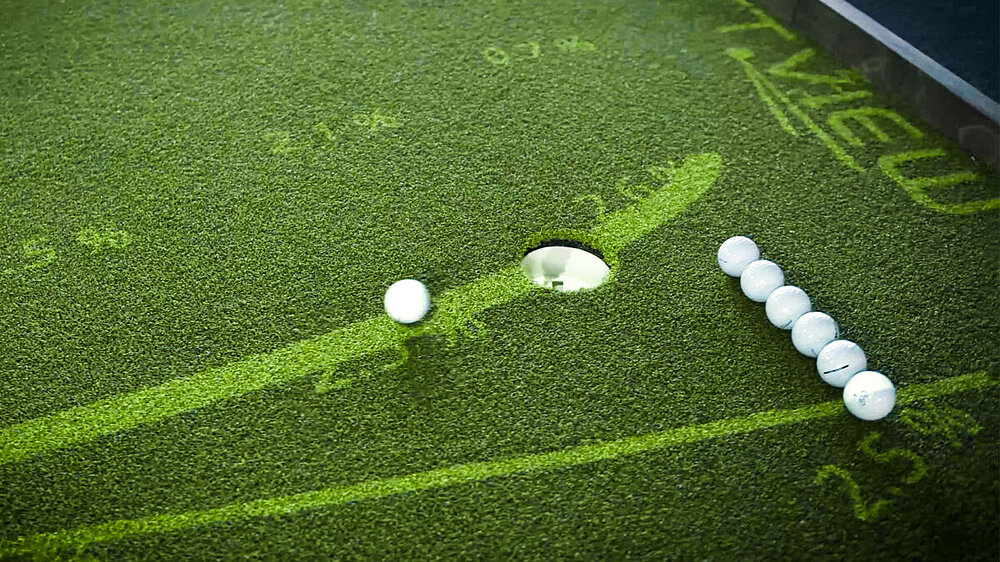
2. As mentioned above, especially curved line thinkers sometimes struggle with aligning themselves to the right spot. However, at approximately 2/3rds of your putt there is a distinct relation between the base line, the path your ball travels on, and the aiming line that will help you change that. At this spot, take a look at the distance between the base line (the straight line between the ball and the hole) and the ideal line (the line where your ball will pass). By doubling this distance, you will ultimately land on the correct aiming line for the putt. As a way to practice finding this spot, you can use coins and place them down on the respective lines. With PuttView you can then run the visuals to see if you placed the coins correctly.
have to aim on those break percentages.
3. Finding some reference points for yourself can help you tremendously on the green. Just because you never face the same putt on the green twice, doesn’t mean that you can’t prepare yourself for various options. On average, you are facing slopes of around 2-3% and it helps to know where you need to aim at on those slopes. Therefore, the next time you practice, find yourself a specific slope percentage and write down how many balls, cups, or whatever other measurement you choose, you need to aim at. If you keep a list like this and additionally practice hitting those putts regularly, you will find it easier on the course to replicate those putts. This will give you confidence in your green reading abilities and ultimately improve your putting performance.
By following those three easy steps, you will be able to improve your green reading significantly. As many golfers never pay attention to the way they perceive a putt or learn how to improve their putting based on their perceptions of a putt, it is difficult for them to see value in practicing their green reading. Starting out by understanding if you are a curved line thinker or a straight line thinker will lead to more efficient practice and real results on the greens, which you can further improve on by implementing the three steps mentioned above into your practice routine. If you would like to find more helpful drills and tips, check out our best practice site.